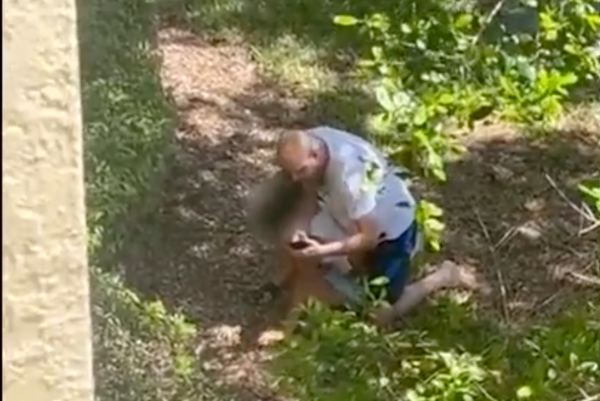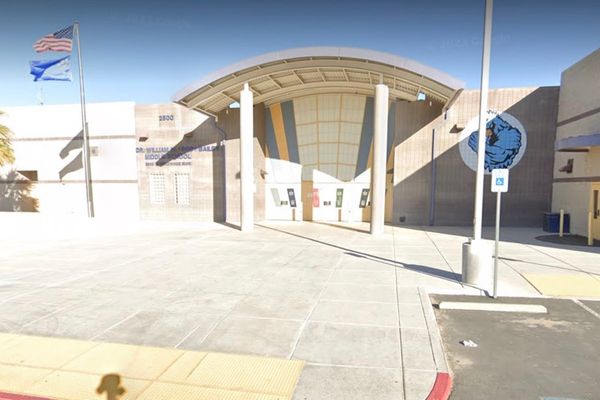
On the slopes up to the ridge, the snow is deep and fresh. Long frozen arms of it hug the trees. Behind us the tracks of our skis gleam with a strange blue light, and in front, delicately drawn into the snow, is the perfect feathery imprint of a bird – like a pale icy fossil. My guide, Jens Sarlin, from Next Step Nature, stops. “Capercaillie,” he says. “It was feeding on pine needles up top and has landed here, then dug a burrow in the snow. It may still be there.”
We edge forwards. A trail of bird footprints lead to a hole, but it’s empty except for some droppings. “They dig down and then sideways to fool the foxes,” says Jens. We move forwards again, silent on our hunters’ skis, antique wooden heirlooms that slip easily over deep soft snow. What we are hunting, with cameras only, is something rarely seen – the wolverine – and Jens knows the best places to find them.
A few nights earlier, I’d arrived in Sweden just in time for a massive late winter snow dump. The drive west into the central Scandinavian mountains had seemed like winter adventure enough for me: the road disappearing before my eyes, the car’s back end doing alarming lindy hop swingouts on the downhill sections. I pulled into Stöten ski resort long after the projected arrival time.
My plan was to see the Swedish winter in all its contemporary glory, then dive back in time and sample the old ways, picking out the best aspects of all the ages. I was starting, very clearly, at the contemporary end. At breakfast, the overheard conversations are about infrared saunas, heliski adventures and the latest developments in snow production.
Outside, Nature, oblivious to such human concerns, is dumping so much snow that the ski lifts aren’t working. The dozens of new cottages are quiet. But there are traditional Scandinavian elements too, things that don’t change: cheerful children playing without smartphone assistance, superlative food, the gentle friendliness and willingness to share information. Swedish ski stations have their own ambience.
I’m at the Stöten ski resort to try something that is so cutting edge that we are using a prototype – an electric snowmobile. Simon Klaar runs a snowmobile experience up here and is planning to have a fleet of them once the developmental stage is finished. Like many locals, Simon is multi-talented: carpenter, woodsman, builder, back-country skier and cyclist. He knows how essential snowmobiles have become. “Have you ridden a petrol version?” he asks, as we inspect what is a fully electric prototype.
How to be polite? As someone who has never had to rely on the machine, I can categorically say I hate them. They are noisy, smelly, one-trick petrol ponies designed to carve filthy ring roads into every pristine winter landscape, sending any wildlife into hiding for miles around. What makes things even worse is that they are fun.
I climb aboard. “How do I switch it on?”
Simon grins. “It’s already on. Just press the throttle.”
A second later I am silently gliding forward. I take a trail out into the birch and spruce forest. The caterpillar track does make some sound, but not much. Best of all, no smell. Simon clatters up on his petrol version. “Like it?”
We pull up at a shelter in the forest and Simon lights a fire to make coffee. On my own, I make a silent circuit of a frozen lake. “These machines will change everything,” I say when back at the hut.
Simon is grinning. “We’ll be able to do silent safaris.”
After such a glimpse of the future, I’m keen to get back where I’m more comfortable: the past. In Mora town on Lake Siljan, I visit the Zorn house, a 19th-century fantasy of a Scandi cabin full of antiques and impeccable carpentry collected by the artist Anders Zorn. He was a local farm boy with talent who rose to become one of the most celebrated portrait painters of his time. His sitters included three US presidents: Grover Cleveland, William Howard Taft and Theodore Roosevelt.
Afterwards, I head out for a horse-drawn sleigh ride with Emelie Eriksson on Sollerön island. As we slither along, Emelie lets slip a little snippet of local news that sums up the character of rural Sweden: “We had a bear on the island last summer and it became a problem and sadly had to be shot.” She makes a sad face, then smiles. “But silver-lining: the hunters donated it to the primary school and the kids all had bear-meat for lunch.” The horse jogs on through the snow and the sleigh bells jingle merrily. I am trying to imagine such a lunch in a British primary school.
Suitably immersed in traditional Swedish pragmatism, I go to meet Jens, our back-country guide. His garage is filled with wooden skis and sleds; his kitchen boasts an impressive array of handmade hunting knives and birchbark containers. Jens, however, is no antique collector; his garage has plastic skis, too, and the kitchen has all mod-cons. His philosophy is to use what is best. “On days like this, with deep snow and no tracks, traditional wooden skis work better.”
We drive to a clearing in the forest. The plan is to ski up into Gyllbergen nature reserve, a vast wilderness of birch and spruce forest interspersed with frozen bogs, lakes and ridges. “There’s bear, wolf, lynx, wolverine, moose, fox, hares,” says Jens as we set off. “Let’s go quietly and look for tracks.”
His particular love is for black grouse and capercaillie. In spring, he seeks out their mating grounds and sets up tented hides, but now the birds are intent on survival.
After a few hours, as darkness falls, we reach our cabin, a simple wooden hut with log burner in the middle. These mountain huts are run on donations and can vary in upkeep and condition. Anyone who arrives is accommodated, but midweek Jens is confident we will have it to ourselves, and so it proves. As the temperature plummets, we tuck into moose and chanterelle stew, then burrow down into our sleeping bags.
The dawn is crystalline sunshine sparkling through the trees. We take a trail south, then branch off, picking our way up ridges and across frozen bogs. Jens keeps to the blue shadows, preferring the harder, faster going. His sixth sense about snow is ultra-sensitive and we move quickly. When we stop, we whisper. “This area is good for wolverine,” he tells me. “We’ll explore around and stay alert.”
Our first success is the capercaille track, then lots of hare spoor, black grouse, raven, ermine and pine marten. But all the time we see nothing moving. All is silent. We descend, dodging the trees. The skis are now sticky with snow and often work like long snow shoes. I’m relieved: I have never conquered that feeling of panic when I start moving downhill at anything faster than a brisk walking pace.
We are approaching an open area, a frozen bog, when Jens stops and points excitedly: 100 metres ahead I see a curve of bristly hair in the snow. Wolverine? But there is no movement. We move forward and find a moose leg, its haunch protruding to mimic the shape of a wolverine’s back. There are tufts of moose hair scattered around and the ghostly imprints of raven touchdowns. There is no sign of the rest of the animal. Jens inspects the scene carefully, then strings all the tiny signs into a plausible narrative: “I think it was a wolf kill that a wolverine raided and dragged here – before this recent snowfall.”
We reach the hut in late afternoon sun and I sit on the stoop whittling with local Mora knives and linden wood. Jens lights a fire in the nearby cooking shelter and then he shouts that fika is ready, I am astonished to find that two hours have passed and it’s almost dark. “That’s the pleasure of spoon-carving,” says Jens. “That’s why we teach it in school, along with ecology and hunting skills.” Swedish rural schools sound like fun.
Fika is instant coffee and homemade kanelbullar, traditional cinnamon buns. As the sun sets, the night comes down with brutal chilling force and we retreat to the cooking shelter, and the fire. We agree that an entire winter here would be perfect.
Next day, Jens skis down the mountain with a sledge, but I prefer to roll, slide, and finally walk, holding the skis over my shoulder. All my learning and skills having deserted me at the end. Fortunately, Jens has saved the final treat: the village sauna in Syrholn, a thoroughly old-fashioned cabin with a handy hole in the ice covering Lake Flosjön right outside the door. Down the lane are Dala-Floda Värdshus hotel and a restaurant, Byns Skafferi, both oozing traditional Swedish winter charm, seasoned with a dash of impish humour. When I tell restaurant owner, Anna, that we found a wolverine kill, she raises an eyebrow. “Oh, they are so common here. Every winter we all go out in the woods and leave the weakest person behind for the wolverine.”
Only a twinkle in her eye gives the joke away, but when I reflect back on that marathon journey down the mountain, I’m not so sure. Was I expected to return, or not?
The trip was supported by Visit Dalarna. Ski tours with Jens from Next Step Nature from 990 krona (£72) a day. Double rooms at Dala-Floda Värdshus from £112 B&B







